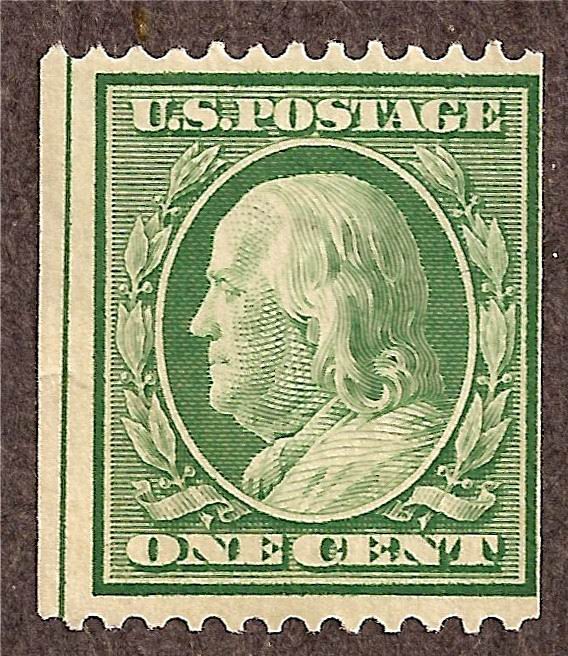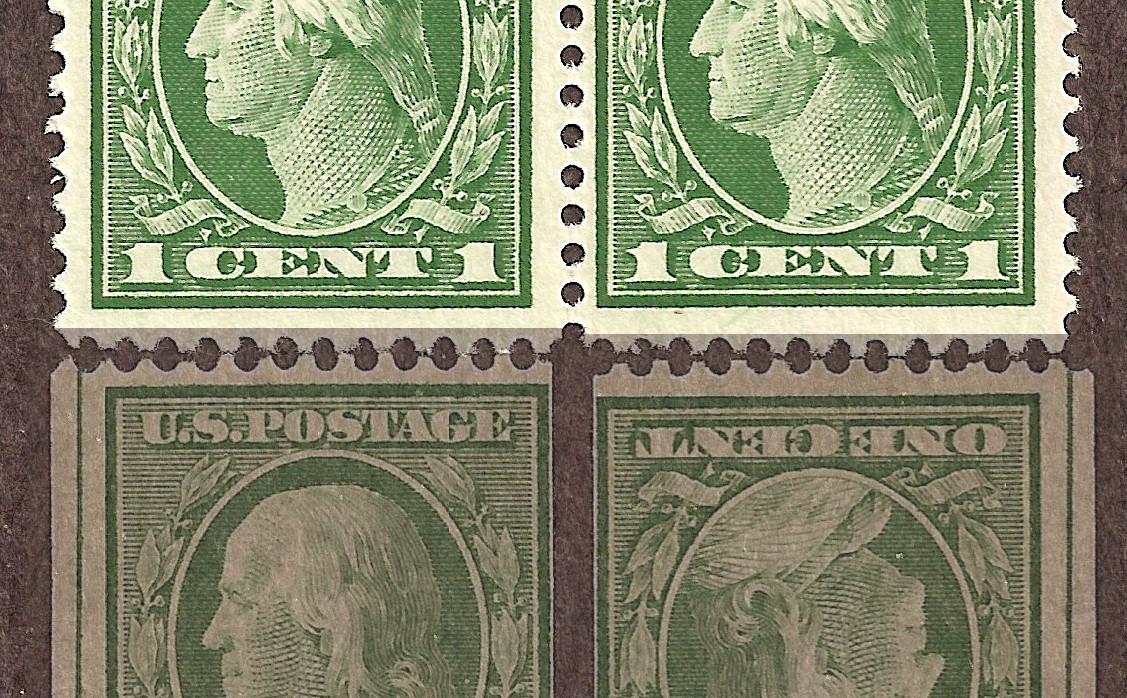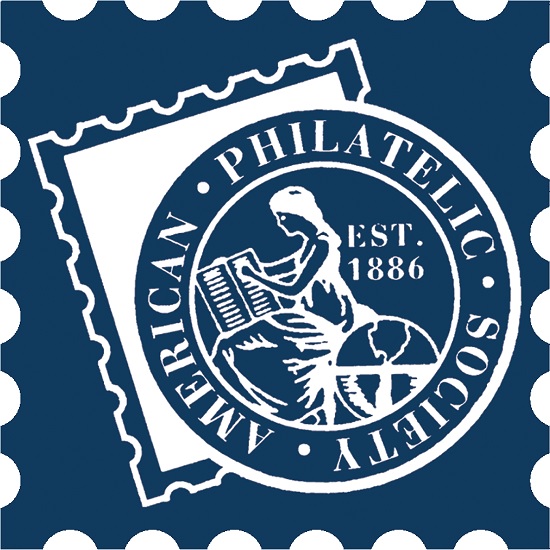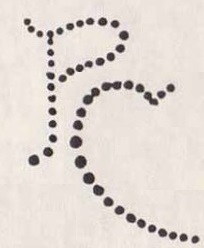Riverside Stamps

Return to Home Page or Altered and Faked stamps Index Page
|
The contents of
this website is copyright protected. Any suggestions for additions or changes are always welcome. |
Suspect Scott #385 - Re-examined
Updated! APS Certificate has arrived Another case of I was right and I was wrong at the same time..
 |
 |
I got the results of sending this stamp to the APS and to my surprise the certificate says the stamp is a Scott #343V with fake perforations added. All along I figured the stamp was a single line watermarked stamp and it turns out to be a double line watermarked stamp which actually makes this a suspect Scott #348. The #348 is often faked and is a moderately expensive stamp with a catalogue value of $37.50 hinged and can be manufactured from a number of stamps like the #343 with added perforations at the top and bottom and trimming left and right, #343V (an imperforate coil that has the stamps lined up horizontally) by adding perforations top and bottom, #331 by trimming the left and/or right edges and finally the #331a by trimming the perforations off at the left and right. "So how did I miss that one?" I asked myself seeing how the double line watermarks in a vast majority of such stamps I look at are fairly strong and stand out while a lot of the single line watermarked stamps have weak marks or barely visible marks. So I set out to see if I could somehow enhance the watermark in the suspect to get a definitive answer. The image on the left is a picture of the stamp in watermark detection fluid that has been enhanced by changing the brightness and contrast to bring out any detail. The image on the right is a picture of my stamp template over the double line watermark diagram in back of The Experts Book and is the best fit I can find for what I see on the stamp when it's in watermark detector fluid.
|
|
|
After the botched watermarking I was spot on with the perforation analysis when I said they just did not look right. So, what's the lesson here? What I take from this is that if there is a possibility that a suspect stamp can either be a double line or single line watermarked stamp then the time must be taken to definitively determine which type of watermark it is before going on with the rest of the analysis. What follows is the original flawed analysis:
Scott #385 is a moderately valued stamp and is often faked according to The Experts Book. The Scott Catalogue value is $45 for an unused very fine example with a hinge remain. The Experts Book states that this stamp can be faked from a Scott #383 by adding perforations to the top & bottom and trimming left & right, a Scott #383E (end wise coil) by adding perforations top & bottom, a Scott #374 by trimming perforations off at left and/or right, and a Scott #374a by trimming the perforations off at left or right.
The first thing that caught my eye was the vertical guide line. Personally I have never seen a horizontal coil with a vertical guide line, I've always seen horizontal coil pairs with horizontal guide lines. As far as I'm concerned that's strike one against the suspect stamp. Update: The Philatelic Foundation (PF) has certified an unused guideline strip of four showing a vertical guide line at the right edge as genuine
The width of the suspect is between 21.25mm and 21.5mm but this is not a defining feature because a #383, #383E and a #374a can all be trimmed with the correct width.
The one thing that can tell the difference between the suspect and a #374a would be the watermark. A #374a would have a vertical watermark whereas a real #385 would have a horizontal watermark. Unfortunately the watermark on the suspect is indeterminate - there is not enough watermark to see to tell if it is horizontal or vertical. There is defiantly a small watermark arc in the bottom right corner but I can't make out any other watermarks with certainty. The images below are two photographs of the suspect stamp when it was in my Safe Signoscope watermark detector. Dipping in watermark fluid gives no better results. I can match the lower right corner mark to any one of a dozen different vertical and horizontal watermark combinations. Update: the actual number of configurations is closer to two dozen.
|
Signoscope light turned down |
Signoscope lamp turned up |
From here on out the analysis of the perforations is ok:
Next I want to look at the perforations. I was looking around the S.C.A.D.S. (Stamp Collectors Against Dodgy Sellers) website. In the Reference Info menu option I found a link to "JIm Baughman's How to do a "flip-comparison" test on perforations". In Jim Baughman's website he describes a method for detecting reperforations from scanned images like you would find on eBay. His premise is that if the perfs in question are flipped both horizontally and vertically and compared against themselves the alignment of the perf holes will give an indication as to whether they're genuine or not. If the perforations line up very well then the assumption is the perfs are genuine but if the alignment of the perfs are off then the assumption is that the perfs are not genuine. I performed this method on the suspect (see image below). My findings are that the top perfs align very well and feel that they are genuine. The bottom perfs are a different story, they don't line up all that well and besides the tips are too flat for my liking. I would have to say that the bottom perfs are added. Update: I have not done much with this method of checking a stamps perforations but if the stamp comes back as bogus there may be merit in the method. As of right now I think direct comparison with genuine perforations is the best way to determine if a stamp has good or bad perforations.

This next image is the suspect perfs compared with the perfs of a #405. As can be seen the top perfs look very good in comparison but the bottom perfs do not. The bottom perfs appear too small and as mentioned before the tips are flat . Update: upon closer examination the top perfs do not match well with the perfs on the #405. The top and bottom perfs are smooth, slightly different shapes from its neighbor and do not show a regular pattern of deformation / fuzzy fibers like that seen in the #405 perfs.

I looked at the right edge but could not see any evidence of perf holes from being trimmed but this would not be unexpected if this was a #374a with a wide left margin as this would allow enough of the right edge to be trimmed to not show perf hole remains In conclusion, which I know now is flawed, I feel that the suspect stamp is a #374a that has had its right side trimmed and bottom edge reperfed. I probably will send this stamp in for expertizing in the near future. . Update: I have sent this stamp in to be authenticated, as soon as I get the results back I will update this listing.
As always comments and suggestions are always welcome. To Contact Riverside Stamps: I am a member of the American Philatelic Society
I am a member of the United States Stamp Society I am a member of the Perfins Club
Email:
Mike Girard - Owner / Operator / Web Master:
g1rardmn1099@comcast.net

APS #: 205494
Visit the American Philatelic Society
Website at www.stamps.org

USSS #: 16733
Visit the United States Stamp Society
Website at
www.usstamps.org

Perfins Club #: 4266
Visit The Perfins Club
Website at
https://www.perfins.org/